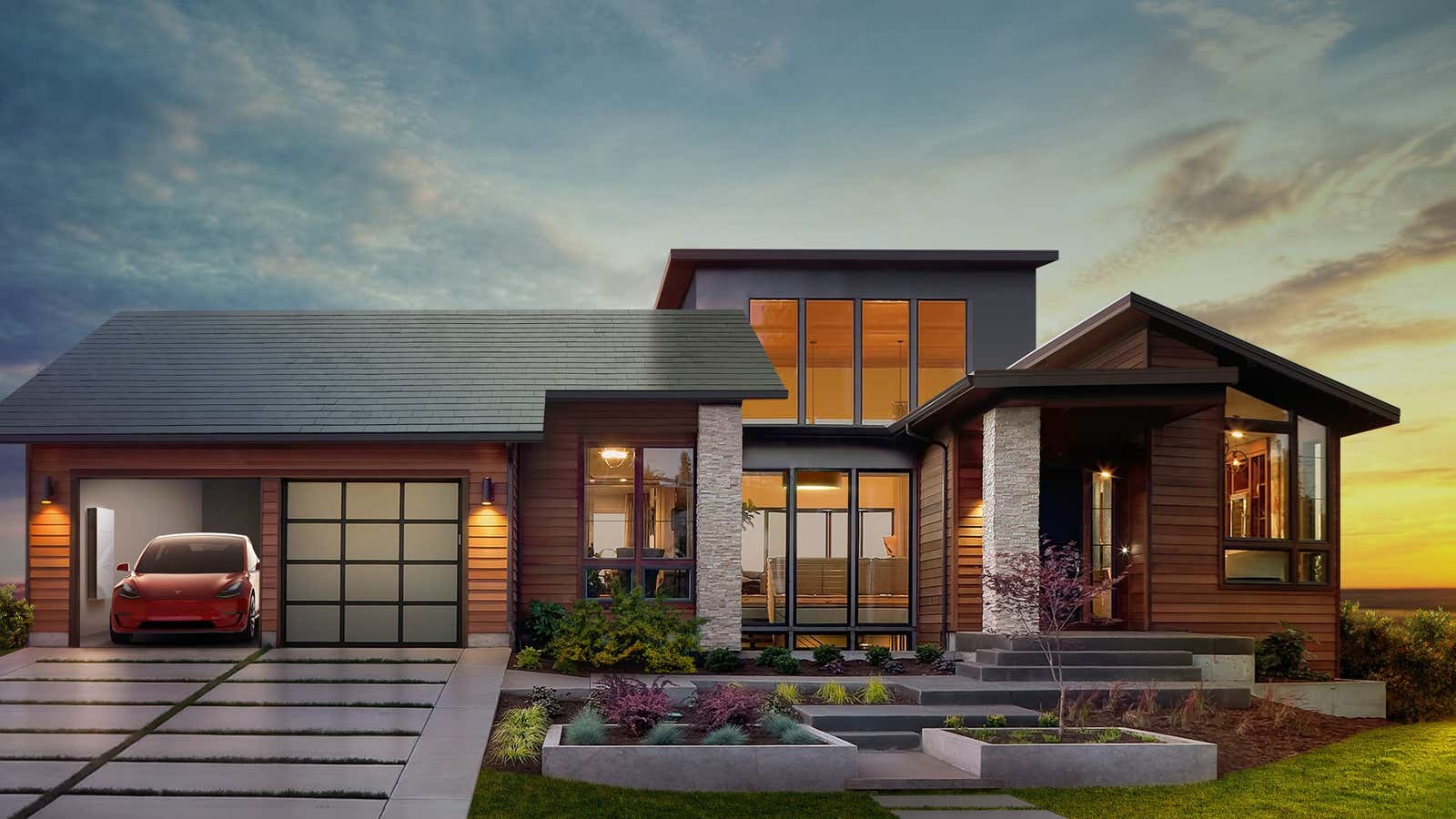SolarCity’s new solar roof is a miniature version of Elon Musk’s Master Plan for Tesla come to life.
“We need to make solar panel as appealing as electric cars have become,” said Musk during an event Oct. 28 unveiling the joint effort from SolarCity and Tesla. “The goal is to have solar roofs that look better than normal roofs, generate electricity, last longer, and have installation costs less than a normal roof plus the cost of electricity. Why would you buy anything else?”
In 2006, the PayPal cofounder announced he was financing Tesla and SolarCity to power all our homes, businesses, and vehicles with carbon-free solar power. Later, Musk said he’d have to do a few things to achieve this: Generate cheap, ubiquitous renewable energy; store this energy in compact, affordable batteries; make cars and building systems that use these electrons instead of fossil fuels; place it all into seamless, attractive products that are irresistible to the public and profitable for corporations; then sell a lot of them.
SolarCity’s new solar roof tries to check all those boxes. The event —timed to help clinch the case for Tesla’s proposed acquisition of SolarCity, which shareholders will vote on Nov. 17—was held on a street with luxury homes in southern California featuring SolarCity’s solar roofs. The company’s textured glass shingles are hydrographically printed to resemble French slate or Tuscan glass, and send electricity into Tesla’s home batteries. Musk also announced its PowerWall 2, a $5,500 home battery that holds twice the energy of previous models and able to power a four-bedroom house for 24 hours, or indefinitely with solar panels.
Although a solar roof was long in the works, SolarCity had to dramatically improve on existing technology first. Solar “shingles” have been marketed unsuccessfully for years. The dowdy chunks of silicon and exotic metals are more expensive and less efficient than standard photovoltaics. Little about using them was easy. Financing was spotty, installation arduous, and aesthetics an afterthought.
Musk, and his affiliated companies, appear to be taking Apple’s transformation of the PC market as their strategy for solar roofs. Just as Apple turned utilitarian grey boxes with buggy software into coveted status objects that simply worked, SolarCity is promoting its solar roof as an easy, aesthetically pleasing product people will desire.
To do this, Musk is pushing a single unit of solar panels, batteries, and software. (No word on pricing just yet, unfortunately.) The companies are bringing design and manufacturing in-house (or nearly so), with Tesla churning out lithium ion batteries at its Nevada Gigafactory, and SolarCity building next generation panels at its 1.2-million-square-foot factory in upstate New York. Then it will wrap those products in decorated glass and beautiful curves that owners can proudly display on homes and businesses. Finally, Musk has hinted he will sell these products in his own retail stores to complete the experience.
The proof will be in the sales numbers. Tesla’s first Powerwall has not proved to be a best seller, racking up a few thousand sales per quarter. The company discontinued its larger 10kWh version earlier this year. But solar itself is on a tear: investors poured $161 billion into solar last year, the most of any single power source, and more than 1 million homes in the US have solar panels on the roofs. Now, those homes could be a bit more beautiful.
